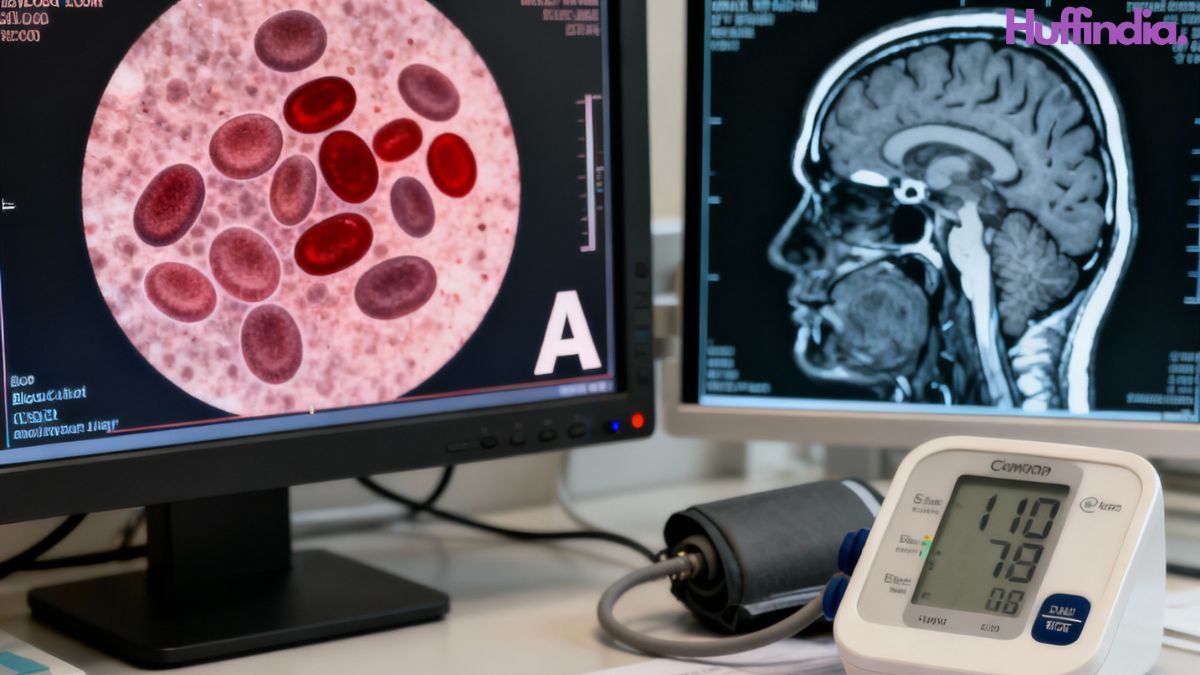Recent medical research has uncovered a significant correlation between blood type A and increased risk of early-onset stroke, adding a new dimension to our understanding of stroke risk factors and prevention strategies. While this discovery may concern individuals with type A blood, medical experts emphasize that blood type represents just one factor among many in stroke risk assessment, and proactive management of other risk factors remains the most effective approach to stroke prevention.
The research linking blood type to stroke risk emerged from large-scale population studies analyzing thousands of stroke cases across different age groups. These studies found that individuals with blood type A face a statistically significant higher risk of experiencing stroke before age 60, while those with blood type O appear to have some protective benefit against early stroke occurrence. The magnitude of this increased risk varies across different studies, but consistently shows a meaningful association that warrants clinical attention.
Understanding why blood type might influence stroke risk requires examining the biological mechanisms underlying different blood group systems. The ABO blood group system involves specific proteins and carbohydrates on red blood cell surfaces, but these markers also appear throughout the cardiovascular system, potentially influencing blood clotting, inflammation, and vessel function. Type A blood is associated with higher levels of certain clotting factors and inflammatory markers that may predispose individuals to thrombotic events like stroke.
Blood clotting represents a complex balance between preventing excessive bleeding and avoiding dangerous clot formation. Individuals with type A blood may have naturally higher baseline levels of von Willebrand factor, a protein crucial for blood clotting, and factor VIII, another important clotting component. While these elevated levels might provide some protection against bleeding, they may also increase the likelihood of inappropriate clot formation in blood vessels supplying the brain.
Stroke occurs when blood flow to part of the brain is interrupted, either by a clot blocking a blood vessel (ischemic stroke) or by bleeding from a ruptured vessel (hemorrhagic stroke). Ischemic strokes account for approximately 85% of all strokes and are the type most likely influenced by blood clotting tendencies associated with different blood types. The connection appears strongest for strokes occurring in younger adults, where traditional risk factors like advanced age and accumulated cardiovascular damage play smaller roles.
However, medical experts strongly emphasize that blood type should not be viewed as destiny. Traditional stroke risk factors remain far more significant predictors of stroke occurrence and are largely modifiable through lifestyle changes and medical management. Hypertension represents the single most important stroke risk factor, increasing stroke risk by 2-4 times when uncontrolled. High blood pressure damages blood vessel walls over time, making them more susceptible to clot formation and rupture.
Diabetes significantly elevates stroke risk through multiple mechanisms, including damage to blood vessels, increased clotting tendency, and acceleration of atherosclerosis. Maintaining good blood sugar control through diet, exercise, medication when necessary, and regular monitoring can substantially reduce stroke risk for diabetic patients. Even pre-diabetic conditions increase stroke risk, making early intervention particularly important.
Smoking represents another major modifiable risk factor, increasing stroke risk by 2-3 times through multiple pathways. Nicotine and other tobacco compounds damage blood vessel linings, increase blood clotting tendency, raise blood pressure, and accelerate atherosclerosis. The good news is that stroke risk begins declining immediately after smoking cessation and approaches that of non-smokers within several years of quitting.
Physical inactivity contributes to stroke risk both directly and through its effects on other risk factors like obesity, diabetes, and high blood pressure. Regular aerobic exercise strengthens the cardiovascular system, improves blood pressure control, enhances glucose metabolism, and promotes healthy weight maintenance. Current guidelines recommend at least 150 minutes of moderate-intensity exercise or 75 minutes of vigorous exercise weekly for optimal cardiovascular health.
Diet plays a crucial role in stroke prevention through its effects on blood pressure, cholesterol levels, weight management, and inflammation. The DASH (Dietary Approaches to Stop Hypertension) diet and Mediterranean diet patterns have shown particular promise for stroke prevention. These emphasize fruits, vegetables, whole grains, lean proteins, healthy fats from sources like olive oil and nuts, while limiting processed foods, excessive sodium, and saturated fats.
Recognizing stroke symptoms quickly can mean the difference between full recovery and permanent disability or death. The FAST acronym helps identify stroke warning signs: Face drooping (sudden facial weakness or numbness, especially on one side), Arm weakness (sudden weakness or numbness in arms, especially on one side), Speech difficulty (sudden confusion, trouble speaking or understanding speech), and Time to call emergency services immediately. Additional symptoms may include sudden severe headache, sudden trouble seeing, sudden trouble walking, or sudden dizziness and loss of coordination.
Time is critical in stroke treatment because brain tissue dies rapidly when deprived of oxygen and nutrients. Clot-busting medications like tissue plasminogen activator (tPA) can dramatically improve outcomes but must be administered within a narrow time window, typically within 3-4.5 hours of symptom onset. Mechanical thrombectomy, a procedure to physically remove clots from brain vessels, can be effective for certain types of strokes within 6-24 hours depending on specific circumstances.
For individuals with blood type A or other elevated stroke risk factors, prevention strategies become particularly important. This may include more aggressive blood pressure management, with target levels potentially lower than standard recommendations. Cholesterol management through diet, exercise, and medication when appropriate can reduce atherosclerosis progression. Some individuals may benefit from low-dose aspirin therapy for stroke prevention, though this carries bleeding risks that must be weighed against potential benefits.
Regular medical check-ups allow for monitoring and management of stroke risk factors. Blood pressure should be checked regularly, as hypertension often causes no symptoms until complications develop. Cholesterol levels, blood sugar, and other cardiovascular risk markers should be assessed periodically based on individual risk profiles. Healthcare providers can help develop personalized prevention strategies based on overall risk assessment rather than focusing solely on single factors like blood type.
Emerging research continues to refine our understanding of stroke risk and prevention. Genetic testing for various clotting disorders and stroke risk genes may become more routine in clinical practice. Advanced imaging techniques can identify individuals at high risk before strokes occur, allowing for preventive interventions. New medications for stroke prevention and treatment continue to emerge from ongoing research efforts.
The discovery of blood type’s association with stroke risk represents important scientific progress, but it should be viewed as one piece of a larger prevention puzzle. While individuals cannot change their blood type, they can take meaningful action to reduce their overall stroke risk through healthy lifestyle choices, appropriate medical care, and prompt recognition of stroke symptoms when they occur.

























